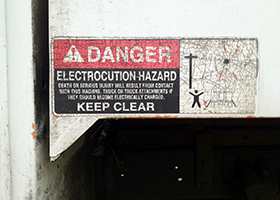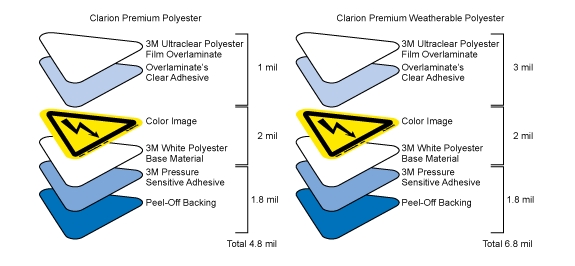The Importance of Using Proper Materials for Safety Labels
Posted by Geoffrey Peckham | 22nd Nov 2016

If you’re an engineer in charge of safety for the products your company puts into the marketplace, you’d be well served to pay strong attention to the materials that go into the safety labels installed on those products. I say this because too many times I’m out in the field, working on safety sign systems for facilities, and I see commercial and industrial equipment that’s on the floor, in use, and its safety labels are peeling off, delaminating or, if outside, fading into obscurity. The issue here is that the materials used in the labels’ construction were not suitable for the long-term exposure to the environment of use they were placed in. And that is a problem that begins and ends with the label’s design and manufacture – once the product leaves your plant, it’s out of your control.
You would think that the printer of your labels would use label stocks and overlaminates that were meant to be used together and have world-class adhesives on them. If you’re printing the labels yourself in-house, the same question can be asked of the makers of the materials you buy. More often than not, making more profit by using or selling less than top-notch materials is the norm…as they just don’t understand the important role each and every product safety label you install serves.
In contrast, Clarion has, from our beginnings 25 years ago, made a point of using top-grade 3M materials and adhesives. The desired end result of risk reduction and accident protection makes any added cost of these materials inconsequential in the big scheme of things. In my opinion, given the alternative (label failure resulting in an increased risk of injury and increased liability exposure), the decision to use high-grade label materials is worth it.

That having been said, even if you use the best materials, you’ll still want to provide your equipment with manuals that describe the location of its product safety labels and provide reorder numbers for them. Labels can still be abraded, torn, painted over and/or purposefully removed. The ANSI Z535.4 standard recognizes this and encourages manufacturers to put label replacement provisions in place. Essentially, you, as the manufacturer, want to be in the position of saying, “What more could we have done?” You used the best materials for the foreseeable application and environment of use, you installed them on your products using correct application procedures, and you provided a reorder process for the owner of the equipment should they ever need to be replaced. Assuming the content and format of your labels is “right” for your product, from a safety and product liability perspective, you’re covered.
To learn more, watch our short video on the “ Durability of Safety Signs, Labels and Markings.”
Geoffrey Peckham
CEO, Clarion Safety Systems

This blog is part of a series of regular posts from our CEO, Geoffrey Peckham, to share his insight. Geoffrey serves as chair of the ANSI Z535 Committee for Safety Signs and Colors and chair of the U.S. TAG to ISO/TC 145 – Graphical Symbols. He has also been selected as a member of the U.S. TAG to ISO/PC 283, an ISO committee writing a new standard, ISO 45001 Occupational Health and Safety Management Systems, which will, when finished, define global best practices for workplace safety. In addition, he is an active member of many industry-specific standards committees related to safety signs and labels for buildings, ships, machinery and products.